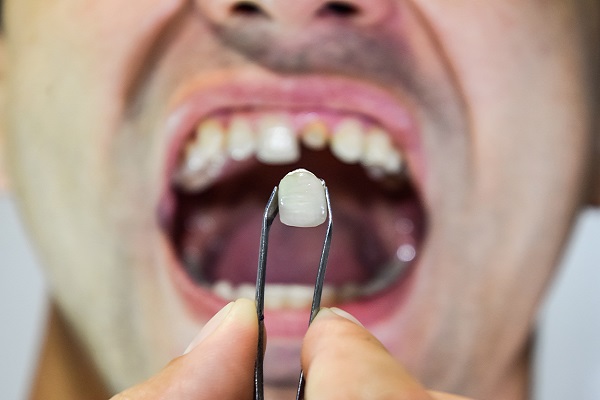Repair Options for a Broken Tooth

Suffering a broken tooth can be scary. However, there are several effective ways that dentists can promptly treat a broken tooth and restore its health and appearance. It is important to know the proper way to handle a broken tooth once it occurs, as well as the available treatment options to consider from your dentist.
Options for broken tooth restoration
The available forms of treatment for a broken tooth depend on the severity of the break, the location of the tooth and the preference of the patient and the general dentist. Common options for repairing a broken tooth include dental bonding, dental veneers and dental crowns.
Dental bonding
Dental bonding, also called composite resin bonding, is a type of dental restoration that uses a tooth-colored material to fix chips, cracks and other types of broken teeth. Dental bonding is often a more affordable option than dental veneers, although they typically do not last as long and are less capable of fixing more severely broken teeth. With that said, dental bonding is a great option for fixing minor concerns. They can easily be applied by the dentist in a single visit, and the process is non-invasive.
Dental veneers
Veneers are thin layers of porcelain material that are custom-fit over damaged teeth to restore the size, shape, function and appearance of the tooth. Dental veneers are one of the more commonly recommended repair options for a broken tooth. This is because they are durable, look great and can protect teeth from further damage. Veneers often cost more than bonding initially, but they often are good value, considering the long-term reliability they offer.
Dental crown
A dental crown is a cap that is placed over a broken tooth to restore its size, shape and health. It protects the tooth from further damage and can improve appearance. There are several different types of dental crowns, including porcelain-fused-to-metal, metal alloy, gold and ceramic. The best type of crown depends on the location of the tooth and the preference of the patient. Dental crowns are often most appropriate for a more severely broken tooth.
Root canal therapy
Root canal therapy is often necessary if a broken tooth extends toward the root and causes damage or leads to a tooth infection. A root canal involves accessing the pulp chamber in the root of the tooth and removing the infected tooth pulp. The dentist will then fill the cavity and seal it. Often, a dental crown is needed after root canal therapy to properly protect the tooth from further harm and to restore its size and shape.
Find out more about broken tooth treatment
Give our team a call today to arrange a time for a consultation visit for your broken tooth. We can assess the severity of the damage and explain all available treatment options. We are glad to answer your questions, and our dental team takes great pride in helping patients through the often-stressful process of receiving prompt treatment for a broken tooth.
Request an appointment here: http://www.vndak.com or call Valley Neighborhood Dental Center at (888) 531-1009 for an appointment in our Palmer office.
Check out what others are saying about our services on Yelp: Read our Yelp reviews.
Related Posts
Denture repair is a common need for patients who wear partial or full dentures. While these oral appliances are strong, they are prone to breaking because of their delicacy. When a break occurs, it can be hard to know whether a denture repair can take place or if a complete replacement is necessary. Thankfully, patients…
Dental veneers are among the most popular cosmetic treatments in modern dentistry. However, there are several misconceptions about their purpose, durability, and required maintenance. If you are considering dental veneers to improve your smile, it can be helpful to understand the myths and facts about this cosmetic treatment.A common misconception is that dental veneers always…
Helping your child develop good oral hygiene habits starts at home. But which products should you use to keep their teeth bright and healthy? Our kid-friendly dentist can recommend the best products to support your child's oral healthcare between their routine checkups and cleanings.A soft-bristled toothbrush designed for children is one of the most important…
Root canal treatment often appears as a reliable option for saving a severely damaged or infected tooth, while extraction removes the tooth entirely. Both options offer advantages and disadvantages, but a few factors help the dentist determine which procedure to perform. Understanding the benefits and considerations of each choice can help you become an active…
